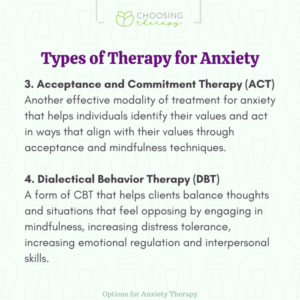
Best arthritis medication is like the fairy godmother of joint pain—here to make your aches and pains disappear with a flick of its wand! Whether you’re wrestling with rheumatoid arthritis or dealing with the cranky joints of osteoarthritis, understanding how different medications work is key to feeling your best. From NSAIDs to DMARDs, the pharmacy aisle can feel more like a maze than a haven of healing, but fear not! We’re diving into the magical world of arthritis relief so you can find your potion of choice.
In this riveting journey, we’ll explore how each medication operates uniquely to tackle the various beasts of arthritis. And let’s not forget—before you start popping pills, consulting with a healthcare professional is just as crucial as finding the right Tinder match.
Overview of Arthritis Medications

Arthritis is like that uninvited guest who shows up at your party and refuses to leave, disrupting everything with pain and discomfort. This condition isn’t just one-size-fits-all; it comes in various flavors, including osteoarthritis, rheumatoid arthritis, and psoriatic arthritis, each requiring a unique approach to medication. So, let’s dive into the wondrous world of arthritis medications and see how they work their magic—or sometimes mischief—on our joints.Arthritis medications can be as diverse as a box of chocolates, with each type tailored to manage specific symptoms and forms of arthritis.
Medications generally aim to relieve pain, reduce inflammation, and improve overall function. By understanding the different types of arthritis and their treatments, patients can better navigate their options and expectations. Here’s a delightful breakdown of common arthritis medication categories and how they can help.
Types of Arthritis and Corresponding Medications
Different types of arthritis require different medications to effectively manage symptoms. Here’s a closer look:
- Osteoarthritis (OA): The wear-and-tear champion of arthritis types. Common medications include:
- Acetaminophen: A go-to for pain relief that doesn’t irritate the stomach.
- Nonsteroidal Anti-Inflammatory Drugs (NSAIDs): Such as ibuprofen and naproxen, these are your inflammation-fighting friends.
- Topical treatments: Creams and gels that deliver pain relief right where it hurts.
- Rheumatoid Arthritis (RA): The overzealous autoimmune condition that attacks joints. Medications here include:
- DMARDs (Disease-Modifying Anti-Rheumatic Drugs): Think of them as the knights in shining armor, slowing disease progression.
- Biologics: Advanced medications derived from living organisms, targeting specific parts of the immune system.
- Corticosteroids: They reduce inflammation and suppress the immune response, but watch out—they can be a double-edged sword!
- Psoriatic Arthritis (PsA): A type that loves to party with psoriasis. Medications include:
- DMARDs: Just like for RA, these help in controlling symptoms and preventing joint damage.
- Biologics: These are especially effective for those with both skin and joint symptoms.
A critical aspect of managing arthritis medication is the necessity of consulting a healthcare professional. It’s essential to have a guide through this jungle of options. A doctor can provide tailored advice based on medical history, severity of symptoms, and potential interactions with other medications. Just think of them as your personal GPS, steering you away from dead ends and unnecessary detours.
Consulting a healthcare professional is not just a suggestion; it’s a vital step in ensuring you’re on the right path to managing arthritis effectively.
By taking the time to understand your specific type of arthritis and the available medications, you can take control of your symptoms and enjoy life with a little more comfort—and maybe even a little less joint drama!
Health and Fitness in Arthritis Management
In the quest for a life unfettered by the clutches of arthritis, embracing health and fitness becomes as essential as finding the right medication. After all, who says managing arthritis has to be a gloomy affair? Incorporating physical activity into your daily routine can be a game-changer, transforming those creaky joints into nimble movers with a little bit of humor and a whole lot of heart.Physical activity plays a pivotal role in managing arthritis symptoms by improving flexibility, reducing stiffness, and enhancing overall physical function.
The secret sauce lies in low-impact exercises that won’t make your joints feel like they’re auditioning for a role in a horror movie. Regular movement helps lubricate those joints, and it can even brighten your mood, turning your frown upside down—who knew exercise could be an instant mood lifter?
Recommended Fitness Routines for Arthritis Patients
Embracing a fitness routine tailored for arthritis can bring a wave of relief and a dash of joy into your life. Here are some low-impact exercise options that keep your joints happy while you get fit.
- Walking: A low-cost exercise that requires no special equipment. Just lace up your shoes and strut your stuff at a pace that feels good to you. Aim for 15-30 minutes a day.
- Swimming: Perfect for those with arthritis, the buoyancy of water reduces strain on your joints while providing a full-body workout. Channel your inner mermaid (or merman) for 30 minutes, three times a week.
- Cycling: Hop on a stationary bike or hit the road on your trusty two-wheeler. Cycling is gentle on your joints and can be tailored from leisurely rides to more vigorous sessions.
- Yoga: Embrace your inner pretzel with gentle yoga. This practice enhances flexibility and promotes relaxation. Just ensure you choose a class that is specifically designed for arthritis sufferers.
- Strength Training: Using light weights or resistance bands can build muscle strength, which supports your joints. Start with two sessions per week, focusing on major muscle groups.
The following table categorizes exercises by intensity and duration, providing a visual guide to help you choose the right activity for your needs.
| Exercise | Intensity | Duration |
|---|---|---|
| Walking | Low | 15-30 minutes |
| Swimming | Low to Moderate | 30 minutes |
| Cycling | Low to Moderate | 20-40 minutes |
| Yoga | Low | 30-60 minutes |
| Strength Training | Moderate | 20-30 minutes |
“Movement is a medicine for creating change in a person’s physical, emotional, and mental states.” – Carol Welch
Incorporating these exercises into your daily routine can help turn your body into a well-oiled machine instead of a rusty old contraption. Remember, the key is to listen to your body and adjust the intensity as needed. So, go ahead and get moving—your joints will thank you, and you might even find yourself laughing along the way!
Alternative Treatments for Arthritis

Living with arthritis can feel like trying to dance in a pair of shoes two sizes too small—awkward, uncomfortable, and a little painful. Luckily, there are alternative treatments that may help ease the discomfort and make those dance moves a little smoother. From ancient practices to modern holistic remedies, these approaches can provide relief and restore a sense of control over daily life.When it comes to managing arthritis, many individuals are on the quest for alternative therapies that can complement traditional medication.
These treatments often focus on the body’s natural healing processes, aiming to reduce pain and improve functionality. While some of these methods have shown promise, it’s essential to evaluate their benefits and potential drawbacks before jumping in with both feet—or, in this case, elbows and knees.
Acupuncture
Acupuncture involves the insertion of fine needles into specific points of the body, which is believed to stimulate energy flow and enhance healing. Recent studies have shown that acupuncture can significantly improve pain levels and function in individuals with arthritis.
“Acupuncture is like rebooting your body’s system—except instead of turning it off and on again, you’re just poking it with tiny needles!”
Aromatherapy
Aromatherapy employs essential oils from plants to promote physical and emotional well-being. Certain oils, like lavender and eucalyptus, can help reduce inflammation and pain when used in massages or diffused in the air.
“Imagine drifting off to a world where the scent of lavender not only relaxes you but also makes your joints feel like they’ve been pampered at a spa!”
Massage Therapy
Massage therapy can relax muscles, improve circulation, and relieve stiffness associated with arthritis. Regular sessions can lead to better mobility and a reduction in pain levels.
“Who knew a little kneading could turn you from a stiff joint into the ‘flexible friend’ of the group?”
Yoga
Gentle yoga exercises can enhance flexibility, strength, and balance, while also reducing stress. Many studies highlight yoga’s effectiveness in alleviating arthritis symptoms and improving overall quality of life.
“Yoga—because sometimes, your joints need a little ‘Namaste’ to get back in line!”
Turmeric Supplements
Turmeric, specifically its active compound curcumin, has anti-inflammatory properties that can help manage arthritis symptoms. Many people incorporate turmeric into their diets or take it as a supplement for its potential benefits.
“Add a dash of turmeric to your meals and treat your arthritis like an uninvited guest—you don’t have to let it stay!”
Mindfulness and Meditation
Practicing mindfulness and meditation can greatly reduce stress and improve emotional well-being, which is crucial for those managing chronic pain. By focusing on the present moment, individuals can often experience a decrease in perceived pain levels.
“Meditation: the only time talking to yourself is not only acceptable but encouraged!”
In conclusion, alternative treatments for arthritis can provide valuable support in managing symptoms and improving quality of life. However, it’s important to remember that while these approaches can be effective, they should be considered as part of a comprehensive treatment plan tailored to individual needs. Always consult a healthcare professional before starting any new therapy to find the best balance for your joint health journey.
Last Point
In conclusion, the quest for the best arthritis medication is a journey filled with options, discussions, and perhaps a few false starts—kind of like dating in your twenties! Armed with knowledge and consultations with your healthcare wizard, you’ll be well-equipped to conquer those pesky joint pains. Remember, with the right medication, a sprinkle of physical activity, and maybe a dash of alternative therapies, you can reclaim your life and dance your way through the day, one smooth move at a time!
Essential Questionnaire
What is the best medication for arthritis?
There’s no one-size-fits-all! The best medication depends on the type of arthritis and individual response, so consulting a doctor is a must.
Are there side effects to arthritis medications?
Yes, like any good drama, medications can have side effects! It’s important to discuss these with your healthcare provider.
Can lifestyle changes reduce arthritis symptoms?
Absolutely! Incorporating exercise, a balanced diet, and stress management can work wonders alongside medication.
How long does it take for arthritis medication to work?
It varies! Some folks feel relief in days, while others may take weeks. Patience is key!
Is it safe to combine different arthritis medications?
Only if prescribed by a doctor. Mixing can lead to unexpected side effects, so always check with a pro!





